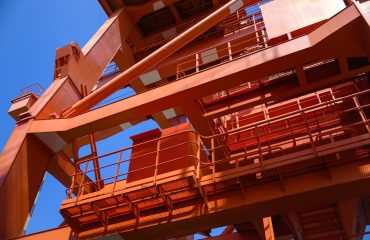The steel industry, a cornerstone of global infrastructure, is undergoing a digital transformation. Digital steel platforms are revolutionizing how steel is produced, processed, and delivered, driving efficiency, sustainability, and innovation. This post explores the key trends shaping the future of these platforms.
1. AI and Machine Learning: Optimizing Steel Production
Artificial intelligence (AI) and machine learning (ML) are no longer futuristic concepts; they’re integral to modern digital steel platforms. These technologies are used to analyze vast datasets from various stages of steel production, from raw material sourcing to finished product delivery. This analysis allows for predictive maintenance, optimizing energy consumption, improving product quality, and minimizing waste. For example, AI algorithms can predict equipment failures based on sensor data, allowing for proactive maintenance and preventing costly downtime. ML models can analyze chemical compositions and process parameters to optimize the steelmaking process, leading to higher yield and improved product properties. Furthermore, AI can enhance quality control by identifying defects early in the process, reducing the need for rework and scrap.
2. The Rise of the Industrial Internet of Things (IIoT) in Steel
The Industrial Internet of Things (IIoT) is fundamentally changing how steel plants operate. By connecting various sensors, actuators, and machines within the plant to a central network, IIoT enables real-time monitoring and control of the entire production process. This data-rich environment provides valuable insights into operational efficiency, allowing for immediate adjustments and improvements. IIoT also facilitates predictive maintenance, enabling proactive interventions to prevent equipment failures and minimize production disruptions. The integration of IIoT with AI and ML further enhances its capabilities, allowing for automated decision-making and optimization based on real-time data analysis. This interconnectedness improves traceability and transparency throughout the supply chain, ensuring better quality control and accountability.
3. Blockchain Technology: Enhancing Supply Chain Transparency
Blockchain technology, known for its secure and transparent nature, is emerging as a powerful tool for enhancing traceability and accountability within the steel supply chain. By recording every transaction and movement of steel products on a distributed ledger, blockchain ensures transparency and prevents fraud. This is particularly important in verifying the origin and authenticity of materials, ensuring compliance with environmental and ethical standards. For example, blockchain can track the source of raw materials, ensuring they are ethically sourced and sustainably produced. It can also track the entire journey of a steel product from the mill to the end customer, providing complete transparency and accountability. This enhanced traceability can improve trust among stakeholders and increase the value of steel products.
4. Digital Twins: Simulating and Optimizing Steel Processes
Digital twins are virtual representations of physical assets or processes. In the steel industry, digital twins are used to simulate various aspects of steel production, from the blast furnace to the rolling mill. This allows engineers to test different scenarios, optimize processes, and identify potential problems before they occur in the real world. Digital twins can be used to simulate the impact of different process parameters on product quality, energy consumption, and production efficiency. This allows for better decision-making and improved process optimization. Furthermore, digital twins can be used for training purposes, allowing operators to practice and improve their skills in a safe and controlled environment. The combination of digital twins with AI and ML further enhances their capabilities, allowing for autonomous optimization and predictive maintenance.
5. Sustainability and the Circular Economy: A Digital Approach
Sustainability is a growing concern for the steel industry, and digital platforms are playing a crucial role in promoting environmentally friendly practices. Digital tools can optimize energy consumption, reduce waste, and improve resource efficiency throughout the steel production process. For example, AI-powered algorithms can optimize energy consumption in blast furnaces and rolling mills, reducing carbon emissions. Digital platforms can also facilitate the implementation of circular economy principles, allowing for the efficient recycling and reuse of steel scrap. By tracking the life cycle of steel products, digital platforms can identify opportunities for reducing waste and improving resource efficiency. This focus on sustainability not only reduces the environmental impact of steel production but also enhances the industry’s reputation and competitiveness.
The trends discussed above represent a significant shift in the steel industry, paving the way for a more efficient, sustainable, and innovative future. The adoption of these technologies will continue to accelerate, driving further advancements and shaping the landscape of digital steel platforms for years to come.
SEO Tags:
- Digital Steel Platforms
- AI in Steel Industry
- Industrial Internet of Things (IIoT) Steel
- Blockchain in Steel Supply Chain
- Sustainable Steel Production




